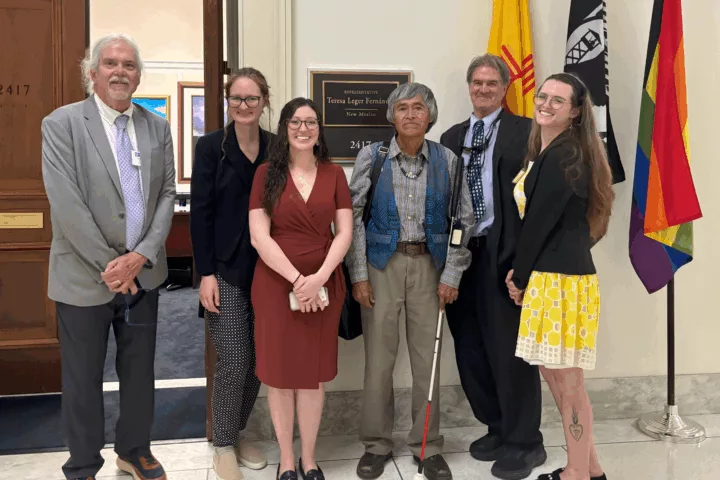Santa Fe, NM – On March 11, the Los Alamos National Laboratory (LANL) sent the federal Environmental Protection Agency a formal notice that the Lab will intentionally release up to some 100,000 curies of tritium, a radioactive isotope of hydrogen gas, beginning April 17, 2020.
An internal Lab document states that actual “anticipated emissions” could be half that because of tritium remaining behind in equipment but offers no documentation to substantiate it. During the 1980’s LANL arbitrarily used a self-declared “building shielding factor” not approved by the EPA that reduced its legally required annual calculated radioactive air dose to the public by a third. When that reduction was disallowed LANL was in fact in legal violation of the Clean Air Act. With that as an example, undocumented reductions in radioactive doses claimed by LANL should be viewed with suspicion.
Because the Department of Energy (DOE) is self-regulating over radioactive materials, the State has little if any say in the matter. This massive radioactive venting takes place as northern New Mexico begins to grapple with the coronavirus pandemic. At the same time DOE is ramping up nuclear weapons production and plans to cut cleanup at the Lab nearly in half.
Tritium is used to boost the nuclear detonation of the plutonium pit bomb cores for which LANL is rushing to expand production. As an emitter of low energy beta type radiation, tritium is not dangerous externally but can be a radiation hazard when inhaled or ingested in food or water or absorbed through the skin. Tritium easily bonds with oxygen to form radioactive (or “tritiated”) water that living organisms (including fetuses) can uptake. Nearly all atmospherically released tritium gas is rapidly converted into tritiated water and thus can enter the food chain.
Because tritium radioactively decays into harmless helium at a rate of 6% per year the safest course would be if the Lab simply waited instead of releasing it. However, the ~50 gallon containers holding the tritium have been recognized since 2016 as a safety hazard because they have possibly become pressurized with an explosive mixture of hydrogen and oxygen. The containers may also be structurally deficient because of corrosion issues and over-torqued closure bolts. In 2014 a radioactive waste drum improperly prepared by LANL ruptured underground at the Waste Isolation Pilot Plant in southern New Mexico, contaminating 21 workers and closing that facility for three years, costing taxpayers at least $1.5 billion to reopen.
Much of the publicly available information about these potentially explosive radioactive tritium containers comes through the independent Defense Nuclear Facilities Safety Board. DOE has tried to limit the Board’s access through a unilaterally issued order that is arguably illegal because it conflicts with legislation that clearly states that the Board decides what access it needs.
DOE may be backing off from its attempt to kill the messenger because of congressional backlash, largely led by New Mexico Senators Tom Udall and Martin Heinrich. That said, both Senators are keen on expanded plutonium pit production at LANL, which is slated to receive nearly tripled funding in FY 2021. Both Udall and Heinrich have yet to declare support for public environmental impact statements arguably required by the National Environmental Policy Act that could shed light on significant public hazards such as this intentional release of up to ~100,000 curies of tritium.
Jay Coghlan, Nuclear Watch New Mexico Director, commented, “New Mexicans should ask themselves what is real national security? As DOE cuts cleanup, is it more nuclear weapons production that contaminates air and groundwater and does nothing to protect us against the coronavirus pandemic? Clearly the answer is no, and nuclear weapons spending should be cut and redirected towards cleanup and public health.”
# # #
LANL’s notice to EPA on its planned tritium release is available at
https://permalink.lanl.gov/object/tr?what=info:lanl-repo/lareport/LA-UR-20-22239
Much detail is available at https://permalink.lanl.gov/object/tr?what=info:lanl-repo/eprr/ESHID-603412. Attachment 1 page 9 documents a total tritium inventory of 114,683 curies as of June 2019. Pages 10-11 give “anticipated emissions” of 45,873 curies.
Samples of relevant Defense Nuclear Facilities Safety Board “Weekly Reports” are available at
and

